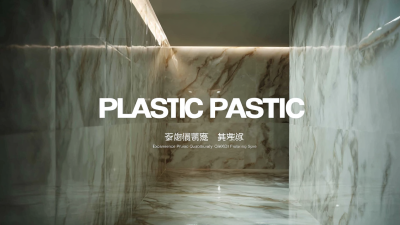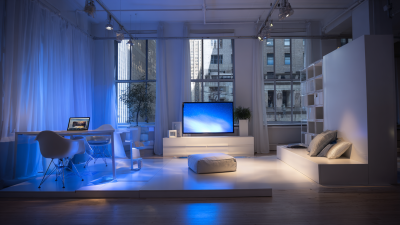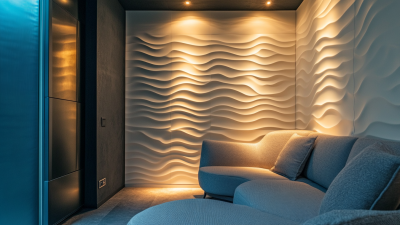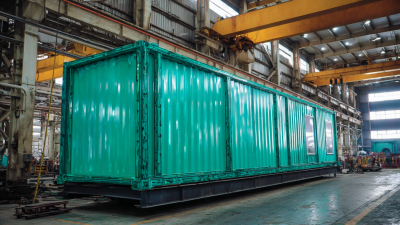
As homeowners increasingly seek sustainable solutions for their renovation projects, the rise of innovative materials is transforming the landscape of eco-friendly home improvement. Among these, Plastic Bathroom Cladding stands out as a versatile and practical choice that not only enhances aesthetic appeal but also contributes to environmental conservation. This guide will explore the myriad benefits of incorporating Plastic Bathroom Cladding into your bathroom renovations, highlighting its durability, low maintenance requirements, and stylish designs. With the growing emphasis on reducing carbon footprints and embracing sustainable practices, understanding how to effectively implement Plastic Bathroom Cladding can empower homeowners to make informed decisions that align with their eco-friendly goals. Join us as we delve into the essential steps and considerations for using this innovative material in your next renovation project, ensuring a modern, sustainable, and beautiful bathroom.

Plastic bathroom cladding is quickly becoming a popular choice for eco-conscious homeowners looking to renovate. The environmental benefits of this innovative material are significant, making it a great alternative to traditional bathroom finishes. Unlike tile or wood, plastic cladding is often made from recycled materials, reducing waste and promoting sustainability. Its lightweight nature also means that less energy is required for transportation and installation, further minimizing its carbon footprint.
When considering plastic cladding for your bathroom, it’s essential to keep a few tips in mind. First, choose high-quality products that are durable and long-lasting. This not only prevents the need for frequent replacements but also ensures that your renovation has a positive impact over time. Additionally, look for suppliers that prioritize eco-friendly manufacturing processes and materials. By supporting these businesses, you contribute to a more sustainable industry overall.
Another benefit of plastic bathroom cladding is its easy maintenance. It is resistant to moisture and mold, which not only prolongs its lifespan but also leads to a healthier living environment. To maximize these benefits, clean the surfaces regularly with eco-friendly cleaners. This simple practice helps maintain the aesthetic appeal of your bathroom while ensuring that your choice in materials continues to support an eco-friendly home.
| Aspect | Plastic Cladding | Traditional Materials |
|---|---|---|
| Sustainability | Made from recycled materials, reducing waste | Often sourced from non-renewable resources |
| Energy Efficiency | Lower energy consumption in manufacturing | Higher energy usage in production processes |
| Durability | Resistant to mold and mildew | Can be prone to water damage and decay |
| Maintenance | Easy to clean and maintain | Requires more upkeep to prevent damage |
| Installation | Lightweight and easy to install | Heavier and requires more specialized labor |
| Aesthetic Options | Variety of designs and finishes available | Limited styles and often requires painting |
Plastic bathroom cladding has emerged as a game-changer in the realm of sustainable home renovations, offering innovative design options that align with eco-friendly practices. Recent industry reports indicate that the market for eco-friendly materials, including plastic cladding, is expected to grow significantly, with a projected increase of over 25% between 2021 and 2026. This surge reflects a clear consumer shift towards sustainable living, as homeowners seek materials that reduce their environmental footprint without compromising on aesthetics.
One of the standout features of plastic bathroom cladding is its versatility in design. Available in various textures, colors, and finishes, it allows homeowners to achieve their desired look while benefitting from low maintenance and durability. According to the National Association of Home Builders (NAHB), over 60% of renovators prioritize environmentally friendly materials, and plastic cladding's resistance to moisture and mold further enhances its appeal for bathroom applications. By integrating stylish and practical elements, plastic cladding not only enhances the visual appeal of spaces but also supports a sustainable lifestyle, making it an essential component of modern eco-friendly renovations.

In the realm of eco-friendly home renovations, plastic bathroom cladding is emerging as a cost-effective and sustainable alternative to traditional materials. The global construction plastic market is projected to grow from USD 89.64 billion in 2025 to USD 149.47 billion by 2033, with a compound annual growth rate (CAGR) of 6.6%. This trend highlights the increasing acceptance and integration of plastic materials in construction, primarily due to their affordability and durability.
Moreover, the recycled plastics market in green building materials is set to expand significantly, with an expected growth from USD 5.31 billion in 2024 to USD 12.24 billion by 2034. This remarkable increase underlines the growing emphasis on sustainability within the industry, as more homeowners and builders opt for materials that reduce environmental impact without compromising on quality. By choosing plastic bathroom cladding, not only are consumers benefiting from reduced costs compared to traditional materials, but they are also participating in a wider movement toward sustainable construction practices.
When it comes to bathroom renovations, durability and maintenance are paramount, and plastic bathroom cladding emerges as a standout choice. Unlike traditional materials like tile or wood, plastic cladding is resistant to mold and mildew, making it ideal for the humid environment of a bathroom. According to a report by the UK’s Plastic Building Product Association, plastic cladding can last up to 30 years with minimal maintenance, far surpassing the lifespan of its counterparts, which often require regular sealing and replacement.
In terms of upkeep, plastic cladding is a breeze. A simple wipe down with a damp cloth is usually all it takes to keep it looking pristine. This substantially reduces the time and money spent on maintenance—a report from the National Association of Home Builders indicates that homeowners could save up to 50% on long-term maintenance by opting for plastic over traditional materials.
Tips for homeowners considering plastic cladding: first, choose high-quality products that are certified for UV stability to ensure they won’t fade over time. Secondly, engage a professional for installation, as proper fitting can significantly enhance longevity and performance. Lastly, explore textured finishes that can mimic natural materials, combining the aesthetic appeal with the practical benefits of plastic.

The growing concern for environmental sustainability has led to innovative solutions in home renovations, particularly the rise of plastic bathroom cladding. Unlike traditional materials, plastic cladding offers an impressive reduction in waste and a lower carbon footprint. According to a report by the European Plastic Industry, replacing conventional cladding with high-quality plastic cladding can reduce manufacturing emissions by up to 60%. This significantly lessens the overall environmental impact often associated with renovation projects.
Additionally, plastic cladding is designed for longevity, which contributes to reduced waste. The National Association of Home Builders indicates that over 40% of construction waste is attributed to materials not used, and plastic cladding's durability results in fewer replacements and repairs over time. This resilience not only means fewer resources consumed but also less debris in landfills. In embracing plastic bathroom cladding, homeowners are opting for a sustainable renovation solution that aligns with the urgent need to mitigate waste and lower carbon footprints in residential construction.






